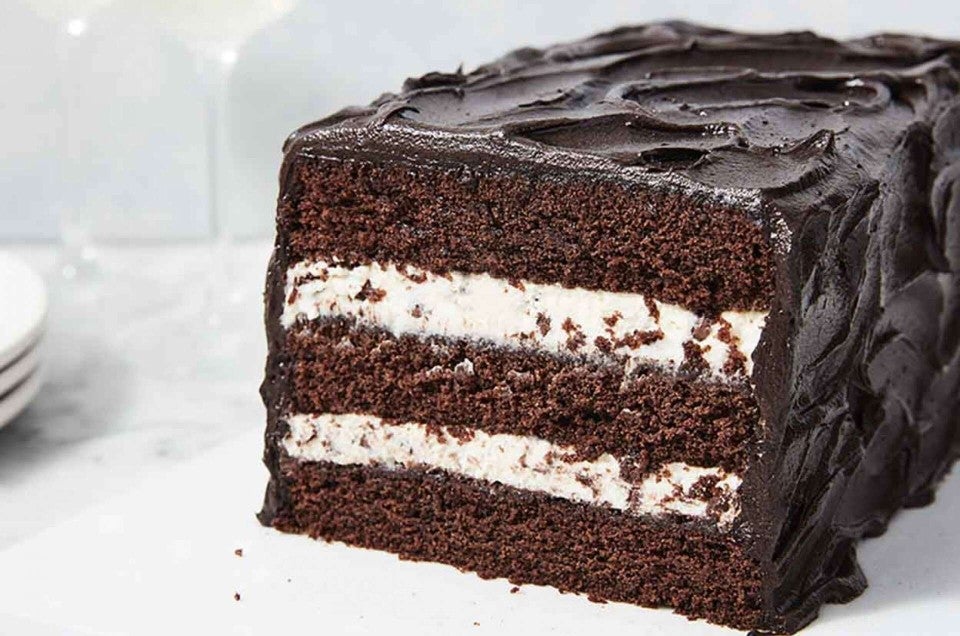


OK, I'm about to confess a deep, dark secret.
I'm married to an Italian, and have been making Italian food for 35 years. I've also been baking for well over 35 years. And in all those years, I've only ever found one Italian cake, cookie, pie, or other baked sweet I'm really fond of:
Ha! You thought I was going to say cassata, didn't you?
Nope. I've never been a fan of this traditional Easter dessert, a rum-soaked vanilla sponge cake studded with candied orange peel, layered around sweetened ricotta cheese and almond paste, and topped with royal icing.
Still, I have a deep bond to tradition, especially at the holidays. I make almond pizzelle and anchovy-stuffed zeppole at Christmas; Easter Pie for Holy Saturday; and Scali bread all year round. And I'm not averse to a fresh, crisp cannoli, though I make sure my source is an Italian pastry shop – since my one and only attempt at homemade cannoli was a pine cone-flavored disaster.
Yes, pine cone: I deep-fried the shells around wooden dowels made of pine. Who knew the sap would leak out into the pastry? Not I – until I took that first big bite...
But back to cassata. Biscotti and pizzelle are tasty, but not a big-splash type dessert. People don't oooh and ahhh when you plop a plate of pizzelle on the table.
How about cake? That's more like it. Just not a rum-soaked, candied peel, almond paste cake.
But chocolate cake? I'm all over that. Thus my Americanized take on cassata: dense chocolate cake, filled with sweetened ricotta cheese and chocolate chips, and iced with creamy fudge frosting. (Hey, don't balk at the ricotta; it's mild, smooth, lightly sweetened, and redolent of vanilla. The chocolate chips don't hurt, either.)
How can you resist? In honor of the upcoming Easter holiday, let's make Cassata.
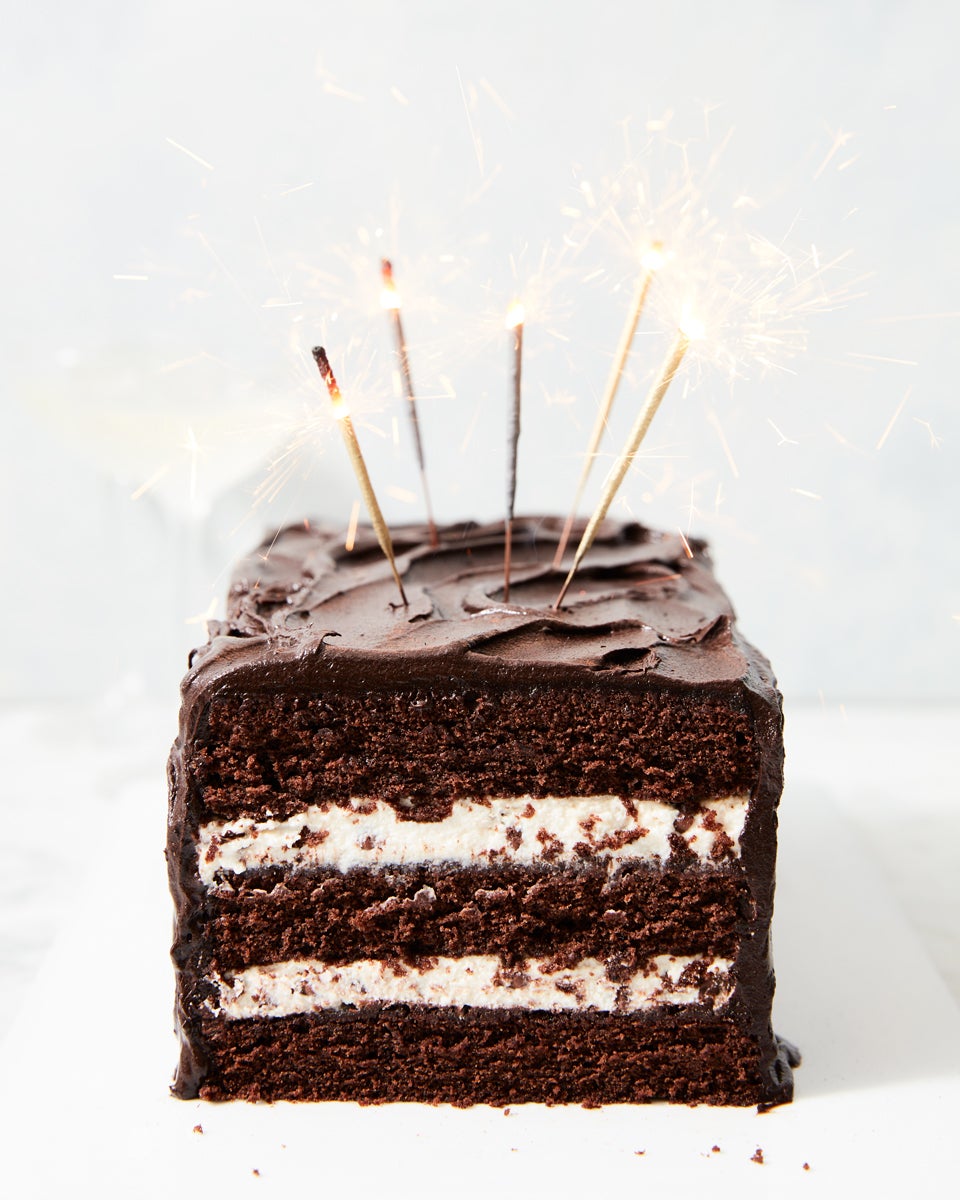
First, the cake.
Preheat the oven to 325°F.
Place the following in a mixing bowl:
8 tablespoons (113g) unsalted butter, at room temperature, at least 65°F
1 1/2 cups (298g) granulated sugar
3/4 teaspoon salt
2 teaspoons vanilla extract
1/2 teaspoon baking powder
1 teaspoon espresso powder, optional, to enhance chocolate flavor
2/3 cup (57g) Dutch-process cocoa
Beat everything together to make a sandy, somewhat clumpy mixture. Don't worry; the eggs will smooth things out.
Add 3 large eggs, one at a time, beating well after each addition. Scrape down the sides and bottom of the bowl midway through this process.
Now, measure out 1 1/4 cups (150g) King Arthur Unbleached All-Purpose Flour, and 3/4 cup (170g) milk.
Add half the flour to the bowl, beating at low speed to combine.
Add all the milk...
...then the remaining flour, stirring to combine.

Lightly grease an 8 1/2" x 4 1/2" loaf pan. Note the size: this will make the best shaped cassata. If you only have a 9" x 5" pan, use it; but expect your cassata to be flatter.
Pour the thick batter into the prepared pan.

Bake the cake for about 70 minutes, or until a toothpick inserted into the center comes out clean. It'll dome nicely.

Remove the cake from the oven, loosen the edges, wait 10 minutes, and turn it out of the pan onto a rack to cool. The top may look a tiny bit damp; that's OK. If you have a digital thermometer, the center will register 210°F to 215°F, while just under the top will register about 198°F to 200°F.
Let the cake cool completely before filling and frosting. In fact, once it's cool, you can wrap it tightly and store it at room temperature for a couple of days, then fill and frost the day you want to serve it.
Next up: the filling.
Stir together 2 cups (15 to 16 ounce container) ricotta cheese, part-skim preferred; and 1/3 cup confectioners' sugar. Add 1 teaspoon vanilla extract. Stir in 3/4 cup semisweet chocolate chips, mini chocolate chips preferred. Or use your favorite bar chocolate, finely chopped.

Cover the filling, and refrigerate until ready to use.
As with any cake, refrigeration will dry it out. So it's best not to assemble this cake until the same day you're going to serve it, preferably just a few hours before, so it can remain at room temperature.
Just before you're ready to assemble the cake, make the frosting.
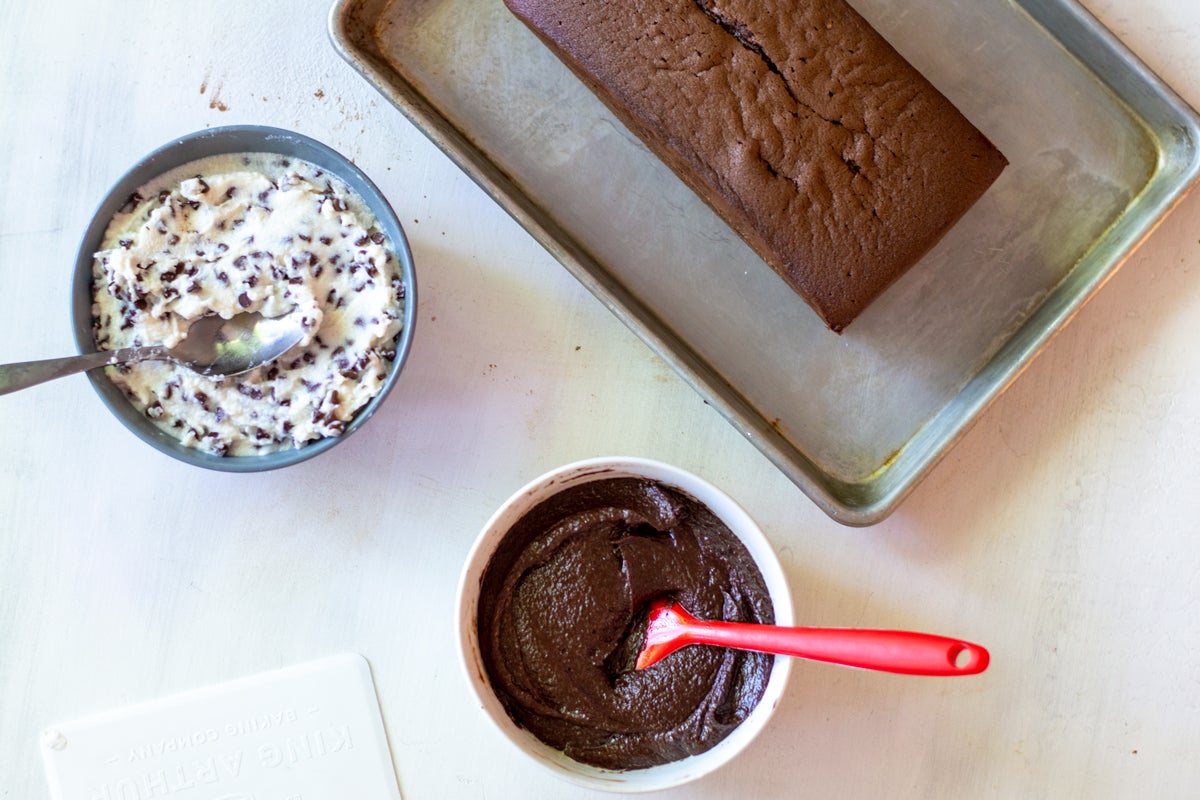
Using a long, sharp/serrated knife, cut the cake into three crosswise layers.

Put one layer, cut side up, on a serving plate.
Rustle up 2 tablespoons simple syrup or vanilla syrup, to brush on the cake. Syrup makes the cake moist, and adds flavor. If you don't have any, it's easy to make your own simple syrup.
Brush the bottom layer of the cake generously with the syrup.
Spread with half the ricotta filling.

Top with the second layer, and brush with syrup.
Spread with the remaining filling. Place the third layer on top.
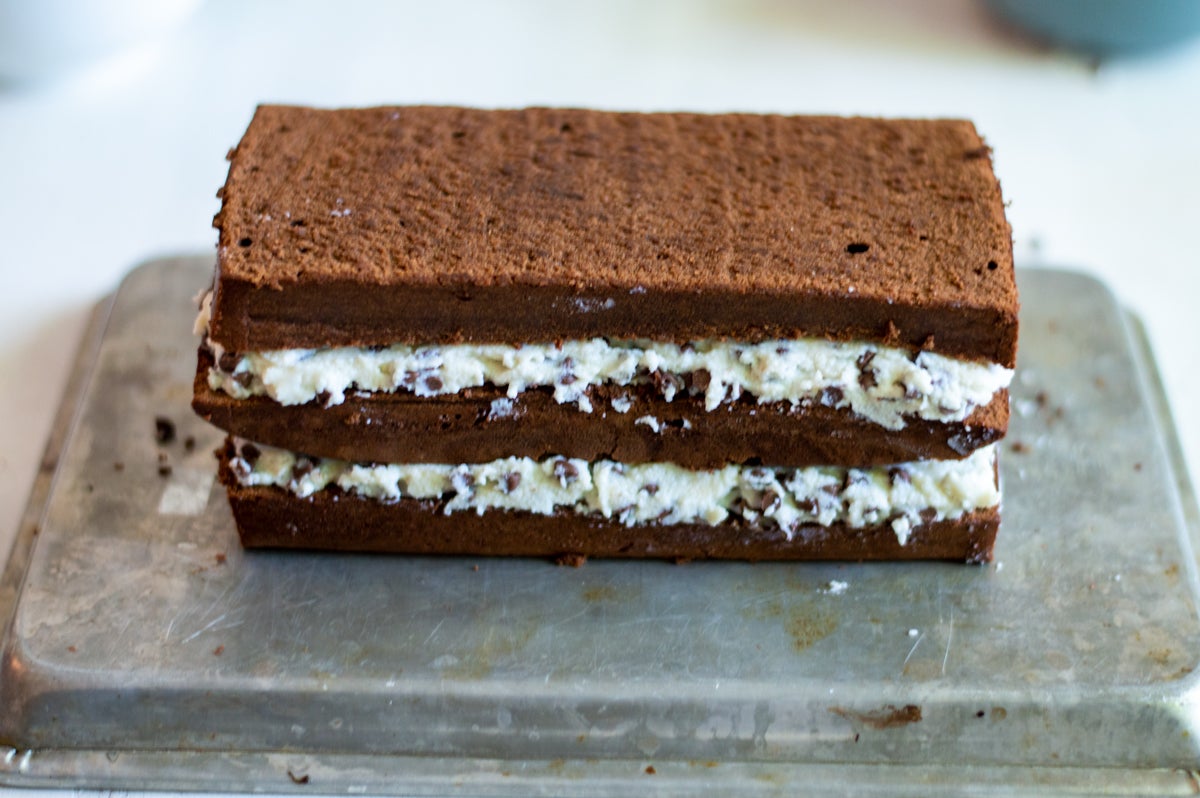
Ice the cake – top and sides – with the frosting.

If you're going to store the cake in the fridge for awhile – again, we recommend no longer than a day – wrap it well in plastic wrap. When wrapping, stick a couple of skewers or toothpicks into the top, to keep the plastic from sticking to the icing.
To serve, cut 3/4"-thick slices. Wet your sharp knife with hot water before slicing, for the cleanest cut. Repeat before each slice.
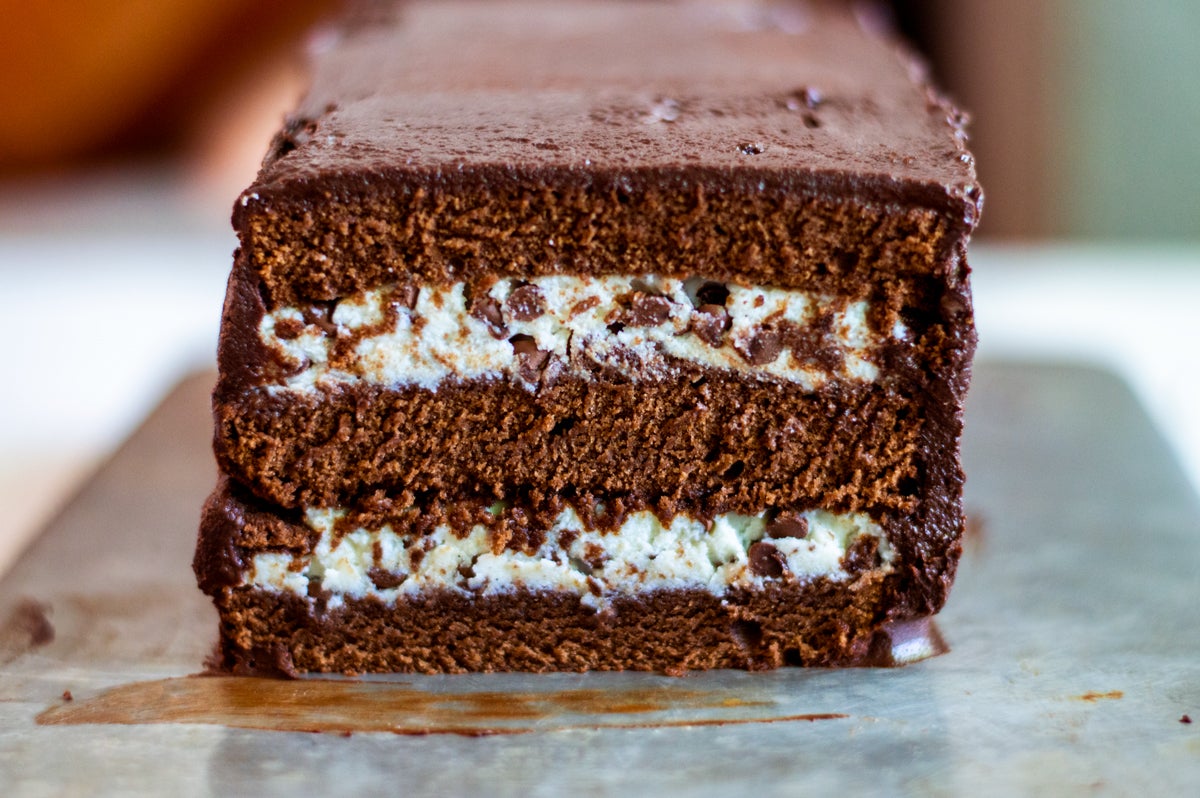
Enjoy!
Please read, bake, and review our recipe for Chocolate Cassata.


August 29, 2022 at 11:26am
No recipe for the frosting?
August 29, 2022 at 3:47pm
In reply to No recipe for the frosting? by Mary Bala (not verified)
Hi Mary, the recipe for the frosting is included on the Chocolate Cassata recipe page.
September 14, 2024 at 8:11pm
In reply to Hi Mary, the recipe for the… by balpern
Thank you for the answer
September 20, 2021 at 9:47pm
Hi, I made this cake and in my humble opinion ,was not my favorite from King Arthur , from the cake so heavy and the filling bland and the frosting was too heavy.
I made Italian dinner and I thought this will be a great dessert ..sorry
October 26, 2020 at 9:56pm
How do you get the filling to be more sturdy so it will not leak out of the sides?
October 27, 2020 at 9:14am
In reply to How do you get the filling… by Jenel (not verified)
Hi, Jenel! Keeping your cake in a cool place before serving should do the trick. It's a pretty sturdy filling, overall!
October 27, 2020 at 11:44am
In reply to Hi, Jenel! Keeping your cake… by kmayerovitch
Thanks so much! Should I have strained the ricotta?
October 28, 2020 at 9:41am
In reply to Thanks so much! Should I… by Jenel (not verified)
That shouldn't be necessary but if your ricotta seems more liquidy than normal, you certainly can!
February 16, 2020 at 8:16pm
I hate cottage cheese could I substitute another item ?
February 18, 2020 at 5:22pm
In reply to I hate cottage cheese could… by Davey Houston (not verified)
Hi Davey, you're in luck! There's no cottage cheese in this recipe. This recipe uses ricotta. Mascarpone is a possible replacement but the ricotta is what's recommended.
Pagination